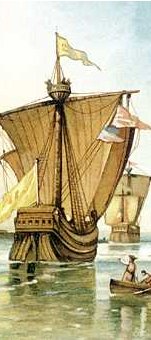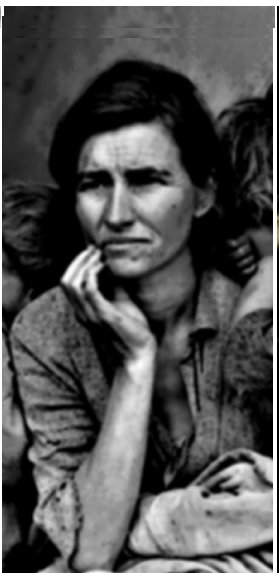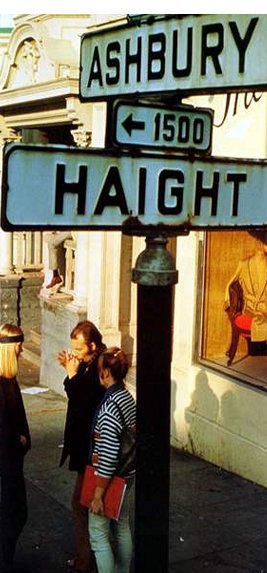The Rancheros Built California Dennis Nguyen
Virginia L. Carpenter lived in southern California
for most of her life. This inspired her to do books that dealt with the local
history. Her books like, The Ranchos of Don Pacifico Ontiveros, A Chil¡¦s History of
Placentia, and As I Look Back tackle the topic of southern California history.
She also works as a reference librarian at the city of Placentia
and it is there were she receives much of her sources from.
Before
colonists expanded westward or forty-niners rushed for gold, California
teemed with life and energy. The Spanish settlers built numerous missions all
across the state. However, the Rancheros made California
the way it is. They established settlements that became the modern, industrious
cities today including Los Angeles,
Anaheim, and Santa
Barbara. One family in particular helped establish the
¡§Santa Barbara and San
Luis Obispo Counties.¡¨1
Virginia L. Carpenter discusses
the family in particular in The Ranchos of Don Pacifico
Ontiveros. They were the legendary Ontiveros.
Before
the establishment of the large ranchos, the Ontiveros
didn¡¦t have much. Rather like all large rancho families, the Ontiveros had a humble beginning. Carpenter describes how
Josef Antonio Ontiveros was the ¡§first of his family
to enter California.¡¨2
He was a soldier in an expedition to Mexico;
at the time Spain
was still trying to develop the continent. They built missions and tried to
convert the Native Americans to Christianity. The Spanish government also
planned to build forts and towns or pueblos. Soldiers and townspeople or pobladores and their families volunteered to live in the
established towns. The volunteers didn¡¦t receive much. All they got were basic
clothing and a little bit of cattle. They were supposed to be paid but
sometimes, they weren¡¦t paid at all. Supplies came on ships but sometimes the
ships couldn¡¦t make it so the supplies wouldn¡¦t get to the pobladores.
The volunteers were supposed to work the land and sell all of their excess
foods to the presidos. This is how the first Ontiveros, Josef Antonio Ontiveros,
got his start. He then married and had two kids. At the time he lived in the
area of what is Santa Barbara
today. According to Carpenter, the Ontiveros began in
Spain.
Originally the surname meant ¡§one who originally lived near the border.¡¨3
There were stories of how one of the Ontiveros,
General Patricio, fought in Waterloo.
His sword was supposedly passed on through the Ontiveros
family until it was lost. Carpenter goes on to describe the struggle of Josef
Antonio. During his service in the army he agreed to a desertion plan by fellow
members. He was caught and was sentenced to serve four years in Monterey.
However, he was soon discharged. From there he went back to Los
Angeles and was given a plot of land. There he had a
son, Patricio. Josef Antonio died in 1798 at the age of 54. At the age of 22
Patricio married Maria. Supposedly he had eight children. At the time people
could petition the government and receive land grants, which is what Patricio
did. Before all the paper work could be finished, however, he died. His son, Pacifico, now head of the family. However, he inherited a
conflict with land.
Carpenter
discusses in this section about the land disputes of Pacifico.
After his father¡¦s death, he and his wife, Martina, moved to Santa Gertrudes where his father once lived. Pacifico
continued his father¡¦s claim for a rancho. Since his father didn¡¦t receive a
formal grant yet, there was a problem. Pacifico said
that he ¡§had been given the place named El Cajon
de Santa Ana.¡¨4 Pacifico needed to provide three witnesses that could vouch
for his citizenship and marriage then Pacifico would
receive his land title. When he finally got it he asked for Juridical
Possession of the Rancho. Finally Pacifico had land.
On a modern map it would stretch from Los Angeles
County line to the Santa
Ana River.
However, the land trouble wasn¡¦t over yet. Carpenter goes on to describe the
dispute with Juan Leandry, an Italian. Leandry bought land from Nieto, the person who supplied the
land for Pacifico. However Leandry
brought a suit against Pacifico over boundary issues.
Both parties had maps with different boundaries on it. Each map included a very
important spring for the respective parties. They both presented the maps to a
district judge. After years and numerous surveying of the land, Leandry got the spring. Land disputes weren¡¦t over however;
Carpenter goes on about the Canada
deal (no relation to present day Canada).
During the time of California¡¦s
annexation, Yorba, another big ranchero owner and another neighbor of Pacifico, bought from Pacifico
the Canada
valley. Carpenter then describes how the United
States changed things. California
finally became a state in 1850. Pacifico became an
American. The United States want to see official documents which the Ranchos
didn¡¦t have. Few ranchos could even write. Pacifico
had to defend his title against the land commission. After a long and tedious
battle, the district court found Pacifico¡¦s title
valid.
Carpenter
then describes the Tepusquet rancho. She takes this
moment to elaborate further into the Rancho¡¦s lifestyle. They loved to party.
Every Saint¡¦s Day was celebrated with a fiesta. Relatives frequently visited
and a typical rancho would have many reunions of the whole family. Their
lifestyle was a simple one. They didn¡¦t worry too much over taxes and didn¡¦t
care much for trivial problems. All they knew was how to live. She then goes
back to the Ontiveros. She states that for some
unknown reason ¡§Pacifico Ontiveros
decided to move from Orange County.¡¨5
He moved to somewhere near Santa Barbara,
sold his land, and bought a small strip of land from Yorba. The old land was
passed on many times. Many people bought it, foreclosed it, and sold it. Pacifico moved to a remote area near Santa
Barbara. There were no roads, and supplies had to be
shipped from San Francisco. Nearby lived a man named Tomas Olivera.
He submitted a petition for the ¡§vacant land called Tepusquet.¡¨6 Olivera filled out all the necessary documents to make that
happen. All in all, his process for a land grant was much faster than Pacifico¡¦s struggle for one. Eventually he received the
land and established the Tepusquet Rancho. A year later though, he asked for more land. Of course he
received that land too because he had enough documents to back his claim. By
the end of everything he had about 8,900 acres that were allowed by the United
State Land Commission. The Rancho Tepusquet lies in
present day city of Santa Maria. In
1848 about a month before the Treaty of Guadalupe Hidalgo, Tomas died, leaving
his wife Maria. Maria petitioned to have the title of Rancho Tepusquet in her and her children¡¦s name. Three years later
the United States Land Commission declared that her claim was valid. A year
after that, a formal patent was signed by President Ulysses S. Grant. However
in 1871 Maria and her two sons died.
Carpenter
then describes what happens to the Tepusquet and
ranchos downfall. After the Olivera left the rancho, Tepusquet was sold to two men. There were still a lot of
boundary issues. The two men eventually traded their land to Pacifico for cattle. Carpenter states that ¡§family
tradition says that Pacifico and his sons drove
12,000 head of cattle to Santa Maria.¡¨7
This was one of the first times that land was used in a trade and not
sold. Pacifico finally owned Tepusquet.
However, 20 years after the purchase, Marian and her husband claimed to have
partial ownership of the land. They sued Pacifico for
10,000 dollars. Pacifico denied that the plaintiff
owned anything. Marian eventually sold her one fifth ¡§ownership¡¨ to William
Graves, who pursued the lawsuit still. Pacifico had
to pay William 3,750 dollars after the court case. Guadalupe tried to do the
same kind of thing with her court case. However, she didn¡¦t win. Pacifico didn¡¦t live long to enjoy his victory. Pacifico died at the age of 81 in 1877. He was buried in a
small cemetery in the back of the San Ramon Chapel. He left nine kids to take
care of the rancho. The entire inventory was given to children and relatives. Tepusquet now flourished. In 1880 there was a huge boom in
the real estate in California.
Every descendent sold their lot of Tepusquet. Lots
were divided and then sub divided into little lots. Eventually Tepusquet was gone. The descendents of the Ontiveros still live, however the great rancho Tepusquet does not.
Virginia
L. Carpenter wrote the book to describe how one of the largest rancho families
came to be. Carpenter wrote a book called A
Child¡¦s History of Placentia and, in doing so found out that there was more
to the story of Ranchos than meets the eye. Eventually she wanted to ¡§attempt
an adult book to tell the whole story.¡¨8 Though she never says it,
her thesis is to inform the readers about the history of the Ontiveros. She believes that their story is important
because they were one of California¡¦s
largest rancho families. Also, unlike the famous Yorba family, their story is
not told enough. Carpenter tries to convey the aspects of the Ontiveros family. However there is also more than that. Her
thesis is also trying to analyze the early rancheros as a whole, and she wants
to present a typical early California
rancho life. Rancho life is already a difficult subject to discuss. Carpenter
wants to convey the reader into a better understanding about the rancho life
and especially about the Ontiveros family. This goal
is a hard one to tackle because there are not many resources about one
particular family. However Carpenter boldly goes through and develops her
thesis, and by doing so, helps spread knowledge to the rest of the world. Her
focus is not like many. No other author dared to go through the topic the way
she did. However Carpenter persevered and finally came with the end result:
original focus on the Ontiveros family.
Carpenter
seems to be a mysterious person. Her book doesn¡¦t have an ¡§about the author
page¡¨ and she does not seem to have many articles about her. However, her book
explains who she is well enough. It is amazingly clear cut and straight
forward. It gives the impression that the author is the same way. However most
interesting is her point of view. She seems to favor the old fashioned way of
thinking. When the new Land Commissions Act went into effect she stated that
¡§all claims had to be filed within two years of the 1851 Land Act, or the grant
would be forfeited, the Ranchos couldn¡¦t file the claims and the new government
knew that¡¨9 She favored the more relax way of how the Ranchos did
things. The ranchos would do surveys and give boundaries from ¡§that rock to
that tree¡¨. The ranchos didn¡¦t have that much paperwork to fill out either.
They finalized the grant by throwing a stick at a sign post. Carpenter seems to
like this method better the official way of the Land Commissions act. She also
likes the festive experience of the ranchos. She describes that the ranchos had
parties for almost all the saints¡¦ days and have many fiestas and celebrations.
She describes them as being positive things, that the ranchos needed the
parties to take some time off. She also stated that it was good for the kids to
play along only and not do too much work.
After
analyzing the book one can see clearly that Carpenter is part of the neo
conservative school of thought in
historiography. She stresses the traditional values of the ranchos and favors
them over the rigid values the new government at the time. Pacifico
was almost ready to obtain his possession but it would require ¡§two years more
of court hearings, witnessing and waiting.¡¨10 She values the old
methodology of the ranchos. She is also non ideological which is characteristic
of the neo conservative. She does not elaborate the ranchos big dreams and
goals. On the other hand, she stays realistic stating how the ranchos need
money and time to get anything accomplished. She doesn¡¦t delve into the
dreamers that existed in the rancho community. She states that it is best to
stay on the ground and not dream for everything to work. She is practical about
the different situations and knows that not all problems can be solved just by
hoping they could be. Instead she explains how the ranchos need to be sensible,
pragmatic, and realistic to solve their problems. Instead of saying that the
ranchos wished this to be true she states that they made this to be true. The
ranchos¡¦ head were not in the clouds, and Carpenter¡¦s head is not either.
The
book itself has excellent qualities. It is an easy read and does not use overly
complicated sentences. The subject matter is also quite interesting. Learning
about the ranchos and the typical early California
life can be enjoyable for everybody. However some parts of the book may be
considered boring. A lot of sections in the book deal with court cases and the
specifics of it. This would not be too bad if Carpenter used less legal
documents. Most court cases in the book were backed by official legal documents
at the time. These documents were dull, saying things like ¡§Don, being present,
made oath in due form of law, under which he offered to speak the truth.¡¨11
These official documents could be pages long. They were tough to read
through and very hard to understand. Legal documents were never an enjoyable
read. Carpenter should have just paraphrased the documents. Besides the legal
documents, everything read quite well. The introduction of the book captures
the reader. The plight of the Ontiveros and the
struggle for land make an interesting read. Also a good aspect of the book is
the descriptions of the typical life of the rancho. It was interesting to read
how the some ranchos woke up at five a.m.
just to pray and get chores out of the way. Also it was enjoyable to read how
the ranchos threw huge parties and engaged in many festivities. The rancho life
was appealing to read about. Anybody with lineage to the Ontiveros
ranching family should definitely enjoy the book, although anyone who doesn¡¦t
will have a pleasure reading the book also.
According
to the author California was not
too altered by many things in the United States.
She states that ¡§while the American on the Atlantic coast was fighting for their
liberty, the Spaniards on the Pacific were struggling for existence.¡¨12 California
at the time didn¡¦t feel the any effect from the rest of the United
States at the time. However that changed
when California became a state
and the Land Commission was enforced. The ranchos were losing land because of
the lack of official documents. Many could not get their title validated. California¡¦s
situation was unique because it was the only state with the rancheros. No other
state possessed these wonderful and colorful characters. The rancheros are what
made early California the way it
was.
To
Carpenter, California is
important to the rest of the country because of its history. Some people in California
can trace their ways to the Ontiveros family.
Carpenter states that ¡§there are still some descendents that carry the name
Ontiveros.¡¨13
The rich history of California
adds to the rest of the country¡¦s grand history. California
brings a unique story to the table. Sure many know about the colonist¡¦s
struggle, but not many know about the Ranchos fight for land. By being rich in
history and full of many stories, California
is important to the rest of the country.
Many
great cities wouldn¡¦t exist if the ranchos hadn¡¦t been in California.
Many vineyards have beginnings with the ranchos. Also, many people would not be
here in California if it was not
for the ranchos. Virginia L. Carpenter preserves the memorable history of the
ranchos in her book. The Ranchos loved the land and loved the other people.
They were not enemies and rarely feuded. When buyers came ¡§they made a rodeo¡¨14
This proves that they loved to have fun. They loved
the life they had and never asked for much. Some cases they shared lands and
didn¡¦t bother with disputes until America
took over. The simple life was the life for them. They didn¡¦t need any fancy
materials or luxury items. They remained loyal to families and neighbors. The
ranchos colorful history will not be forgotten.
1. Carpenter, Virginia
L. The Ranchos of Don Pacifico Ontiveros. Santa Ana:
Friis-Pioneer Press, 1982. Pg 13
2. Carpenter, Virginia
L. 13
3. Carpenter, Virginia
L. 21
4. Carpenter, Virginia
L. 46
5. Carpenter, Virginia
L. 90
6. Carpenter, Virginia
L. 106
7. Carpenter, Virginia
L. 124
8. Carpenter, Virginia
L. ix
9. Carpenter, Virginia
L. 73
10. Carpenter, Virginia
L. 77
11. Carpenter, Virginia
L. 62
12. Carpenter, Virginia
L. 25
13. Carpenter, Virginia
L. 161
14. Carpenter, Virginia
L. 128
Dennis Nguyen is seventeen years old and attends Irvine
High School. As a junior there he
has learned so much about culture and life that it opened up new perspectives
for him. He also learned that hard work pays off.





















